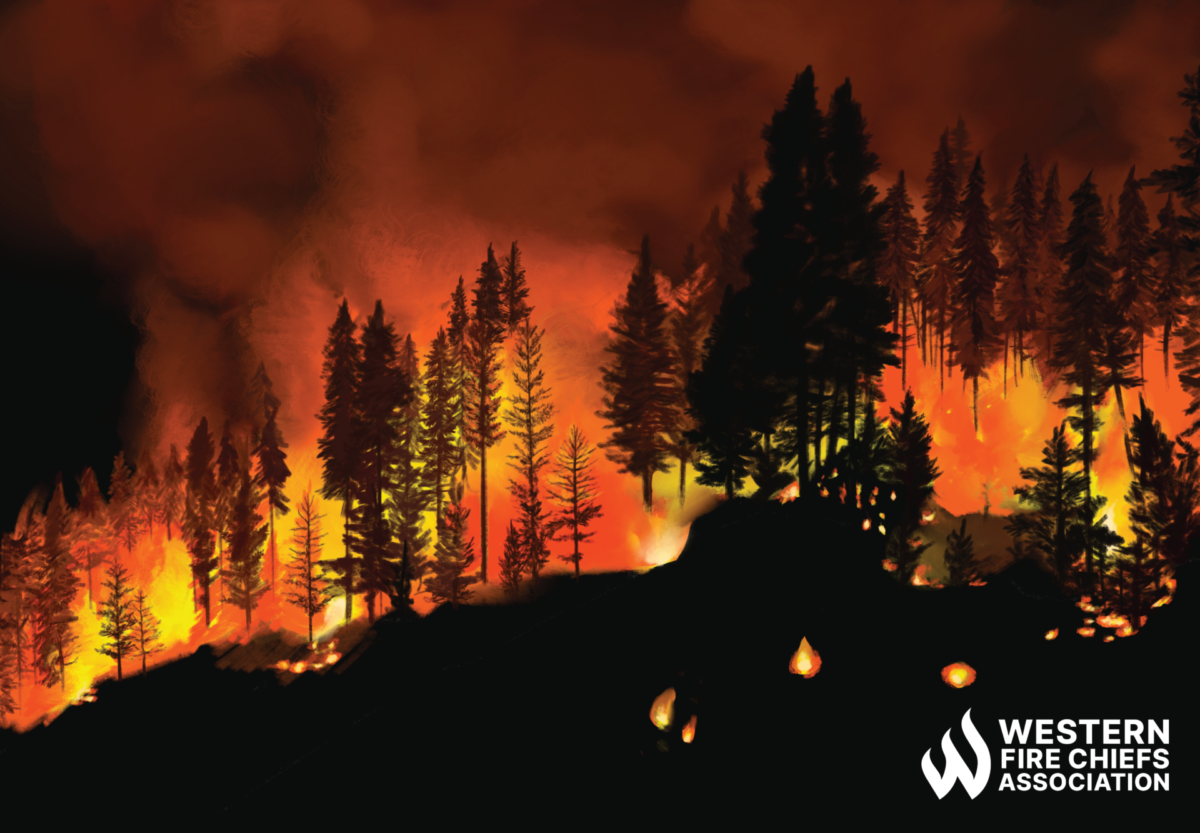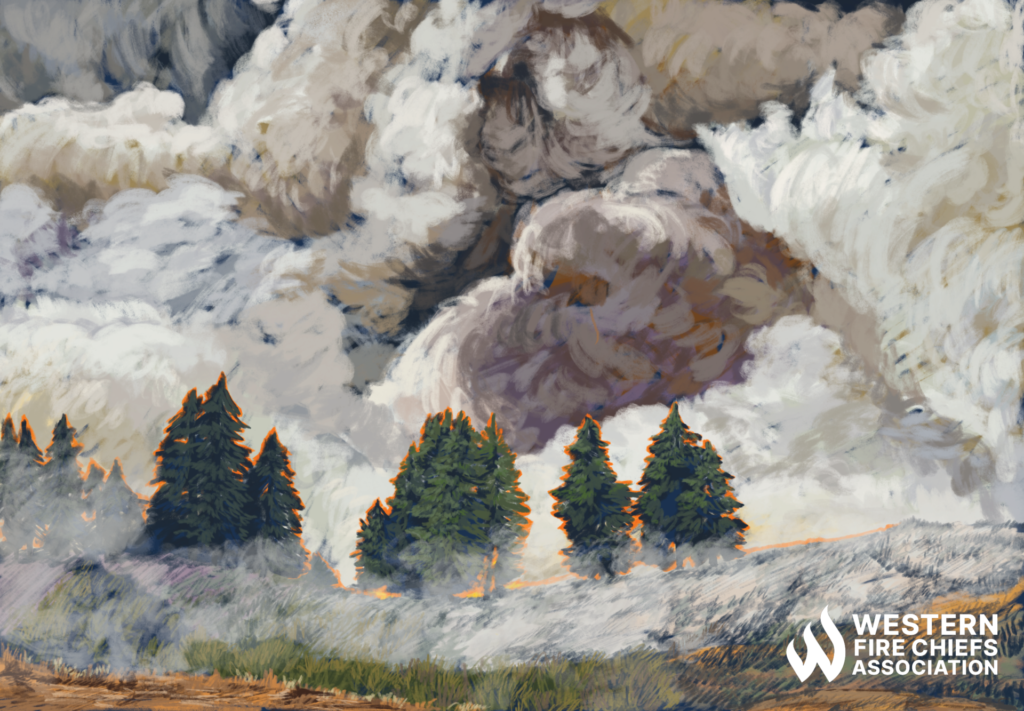Fire Pit Safety Tips
Stay safe around the campfire with tips from the Western Fire Chiefs Association. Learn essential precautions and practices for a worry-free outdoor campfire.
Discover the effects wildfire smoke can have on plants, animals, and the environment with expert guidance from the Western Fire Chiefs Association (WFCA).
Published:September 6, 2022
Edited:March 4, 2024

Discover the effects wildfire smoke can have on plants, animals, and the environment with expert guidance from the Western Fire Chiefs Association (WFCA).
The effects of wildfire smoke on human health are infamous.1 Smoke of all kinds, from wildfires to cigarettes, can worsen asthma, and cause tightness in the chest, dizziness, lightheadedness, and even lead to heart complications and asphyxiation.
However, the effects of wildfire smoke on the environment are less widely known. Just as smoke adversely impacts human health, it can also harm plants, animals, and the atmosphere.
In this article, we discuss the impact of wildfire smoke on the environment in terms of plant life, animal life, air quality, and climate change.
Wildfires are a natural part of many landscapes. They can actually benefit plant life by burning up excess debris on the ground to allow new growth to emerge.2
Unfortunately, human interference with this cycle in the last few decades has caused the number of wildfire incidents to rise beyond natural levels. Manmade wildfires account for around 85% of wildfires in the United States every year.3
This means that plants, including grasses, shrubs, and even trees, are exposed to far more heat and smoke than under normal conditions. Smoke has the ability to block out sunlight and deprive plants of the exposure they need to complete photosynthesis and stay alive.
Scientists are still learning about the effects of wildfire smoke on plant life, however, one study published in 2020 suggested that smoke can actually increase photosynthesis in plants by scattering radiation from the sun deeper into forests than direct sunlight can.4
This is a hopeful sign in the short-term, but any potential benefit of smoke for plants is outweighed by the harm it causes to the rest of the environment, as well as the creatures who live in it.
Wildfire smoke is equally detrimental to the health and well-being of non-human animals as it is to us. Smoke indiscriminately causes lung, throat, and mouth inflammation. Prolonged exposure can also cause animals to move more sluggishly, making it harder to escape if there is an active blaze.
For example, following a series of wildfires in Southeast Asia in 2015, researchers at the Tuanan Orangutan Research Station in Borneo noticed that a local group of orangutans moving more slowly than usual. After observing them and studying samples of their urine, the researchers concluded that the primates’ low energy was the result of an immune response to lung inflammation caused by nearby wildfire smoke.5
Wildfire smoke is also more dangerous to animals depending on the types of particulates it may be carrying. Research suggests that birds, in particular, are more sensitive to air pollutants than other animals, partly because they have a difficult time expelling foreign contaminants from their long tracheas.6
Unlike plant life, there are no benefits to animals inhaling wildfire smoke.
Another environmental issue posed by wildfire smoke is its ability to travel and impact areas that are located thousands of miles away.
If there is a large wildfire burning in a western state such as Oregon or California, the smoke has the potential to reach all the way to New York or other east coast states, nearly 3,000 miles away.7
As such, even if humans or animals live far away from a wildfire incident, they can still suffer from the effects of smoke exposure.

Not only does wildfire make it difficult for animals to breathe, it also travels high into the atmosphere, creating pollution and affecting incoming solar radiation.
A study conducted by researchers at the Georgia Institute of Technology revealed that brown carbon – a type of carbon produced by smoldering biological matter – appears in greater quantities in the upper atmosphere of our planet than scientists previously thought was possible.8
In the upper atmosphere, brown carbon has a “disproportionately large effect on the planetary radiation balance — much stronger than if it was all at the surface,” according to Georgia Institute of Technology professor Rodney Weber. This can create either colder or warmer temperatures. Ultimately, it could worsen climate change, which has already negatively impacted the environment and will only worsen with the continued burning of fossil fuels.
One negative impact of climate change is longer and more intense wildfire seasons, like the kind we are seeing in the western United States. Increasing wildfire smoke leads to worsening climate change, which in turn leads to more wildfires. Thus, wildfire smoke is a vehicle for this devastating cycle to continue and become more extreme.
In conclusion, wildfire smoke is hazardous for all life forms on Earth. It can block sunlight, cause breathing issues and death in animals, travel thousands of miles, and even impact climate change in the upper atmosphere.
The best way to protect yourself from wildfire smoke is by being prepared.9 Have an evacuation plan in place, should wildfire smoke becomes an issue in your area. Advocating for societal action to address climate change, becoming knowledgeable about wildfire, and actively reducing your own carbon footprint are other ways to help reduce the risk of future wildfire incidents.
Stay safe around the campfire with tips from the Western Fire Chiefs Association. Learn essential precautions and practices for a worry-free outdoor campfire.
Discover essential firework safety tips to ensure a dazzling display without accidents. Learn how to celebrate responsibly with expert guidance from WFCA.
Explore the role of AI in wildfire prediction with guidance from the WFCA. Learn how advanced algorithms and data analytics enhance early detection and response.